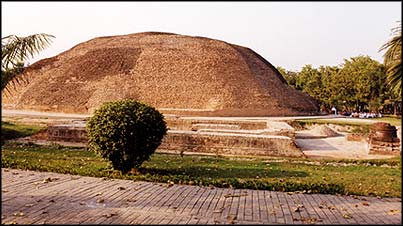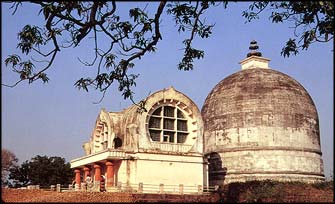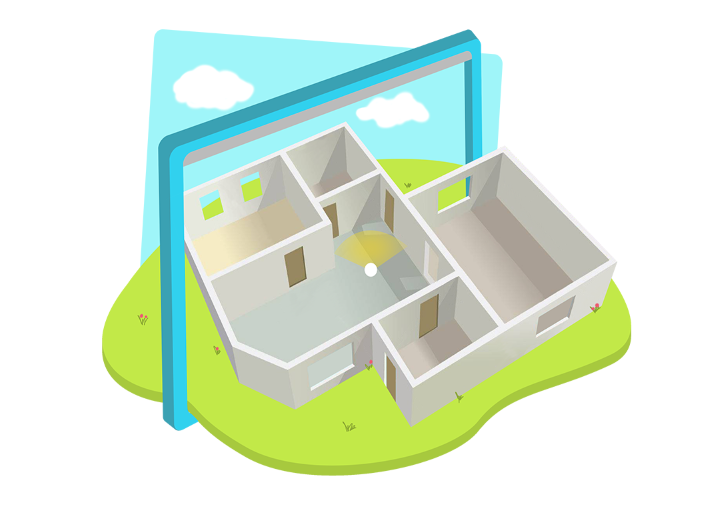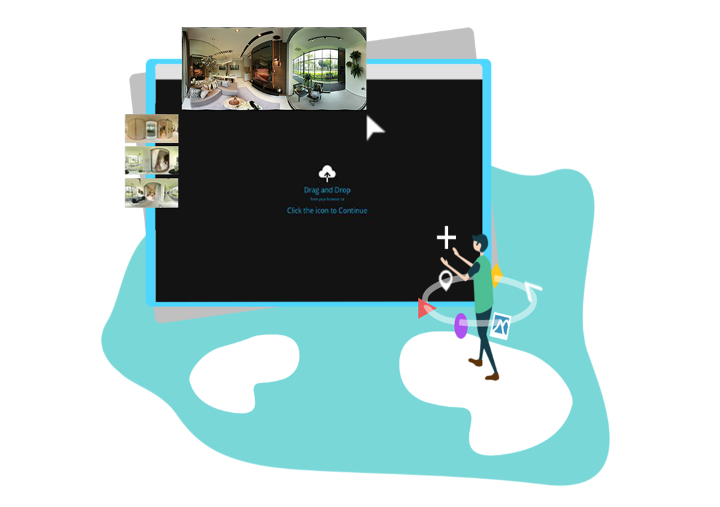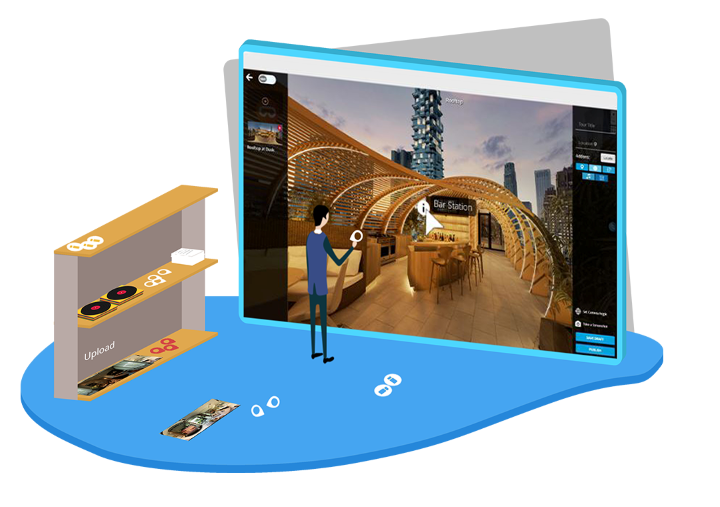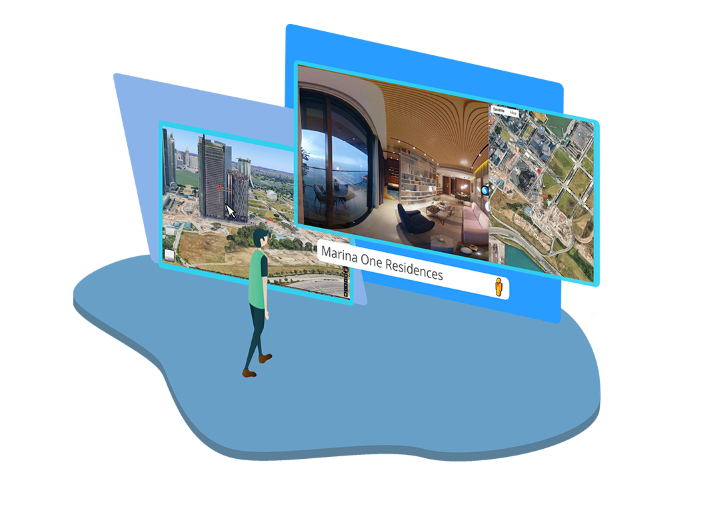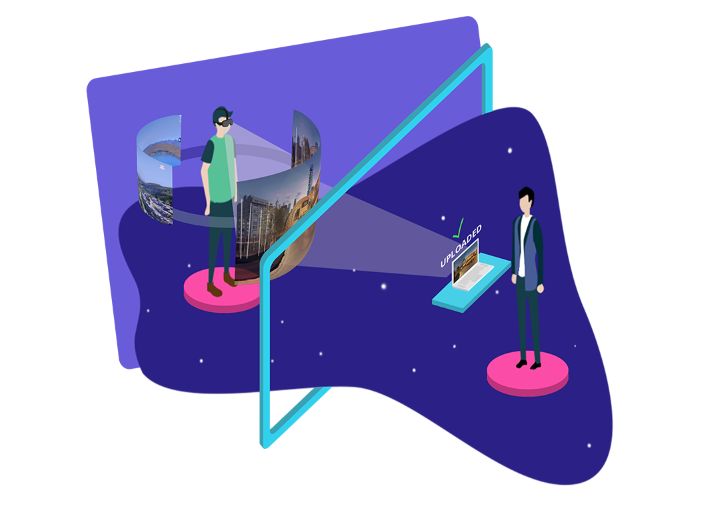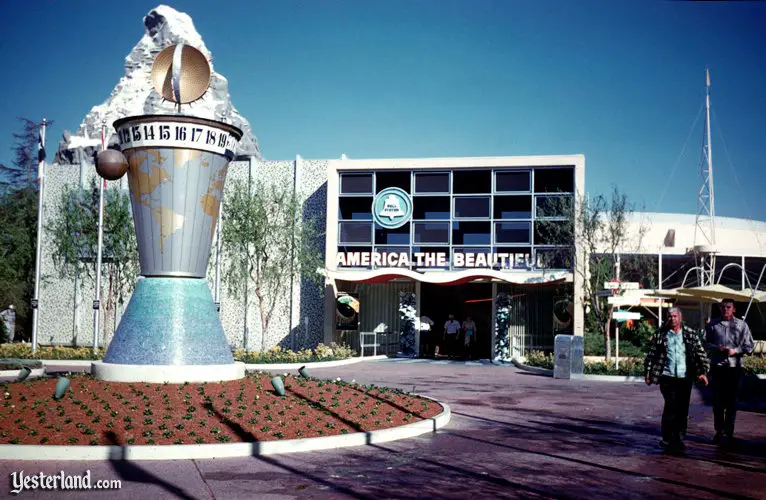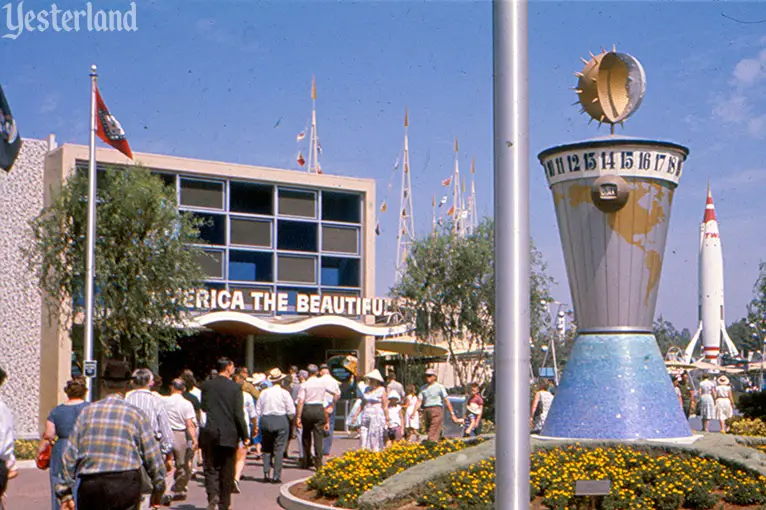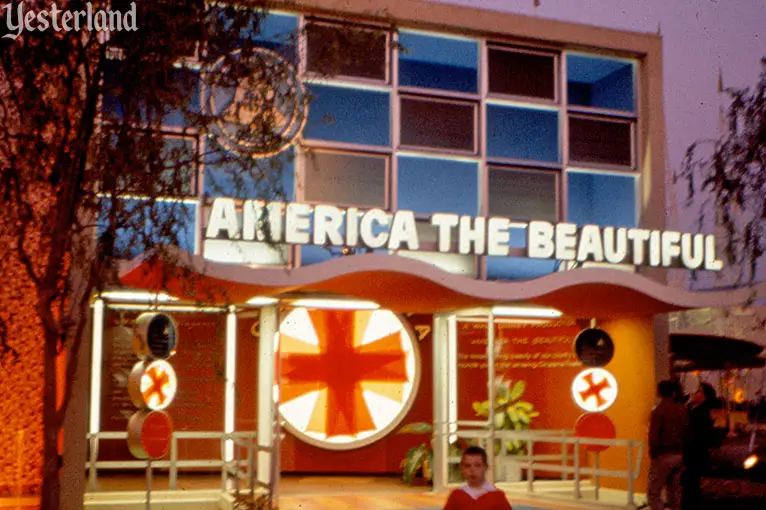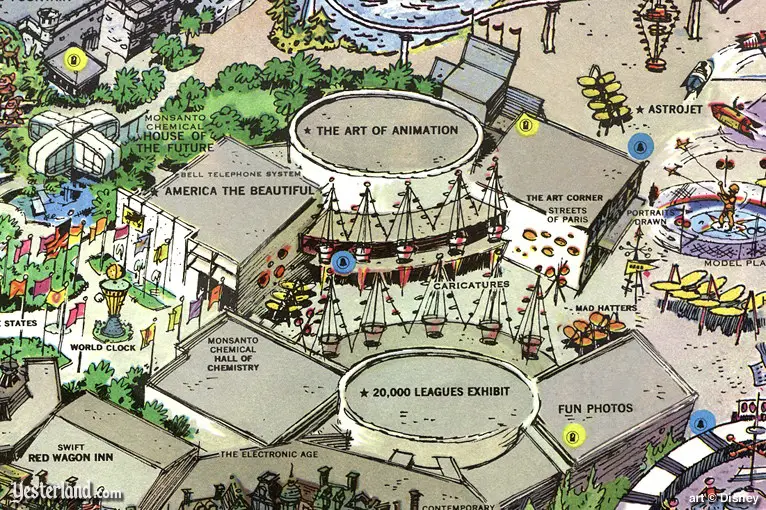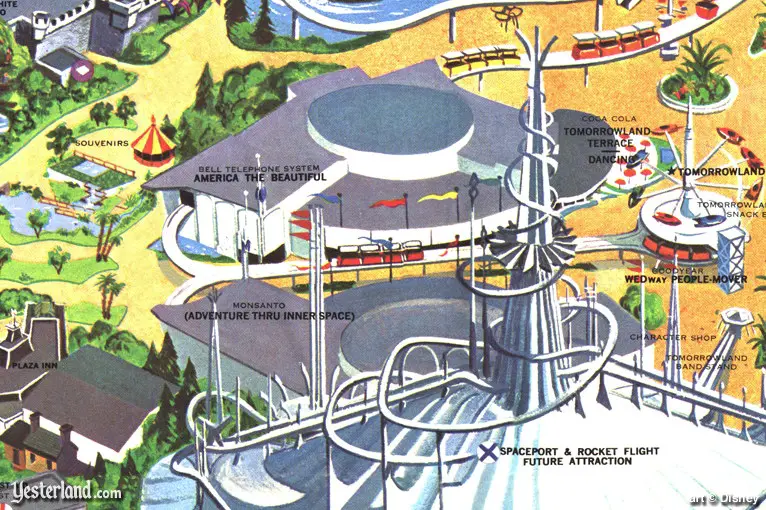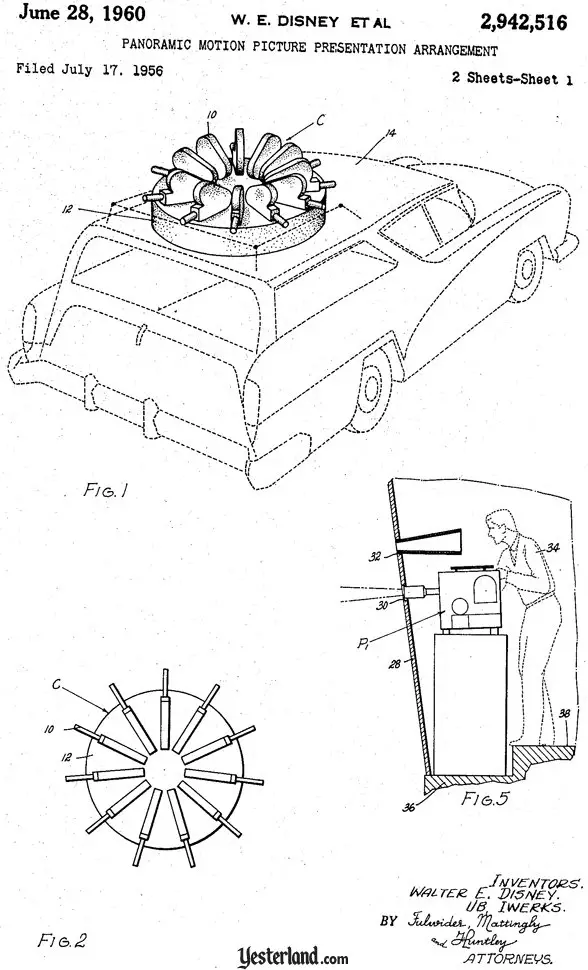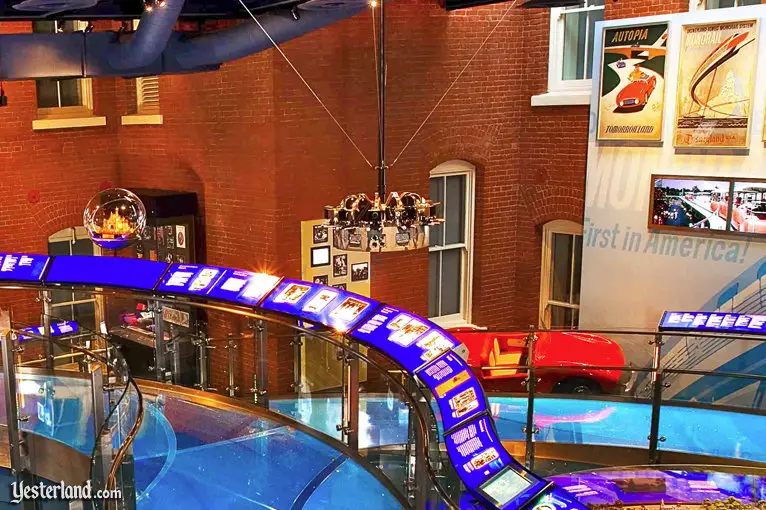Buddhist Circuit Tourist Train | Buddhist Train Tour India
Luxe Train Journeys
9.06K subscribers
Tour Name: In the Footsteps of Lord Buddha
Tour Duration: 07 Nights / 08 Days
Destinations:
Delhi
– Gaya – Bodhgaya – Nalanda – Rajgir – Gaya – Varanasi – Sarnath –
Nautanwa – Lumbini – Kushinagar – Gorakhpur – Balrampur – Sravasti –
Balrampur – Agra – Delhi
Starting from USD 135 / INR 9,890 per Person per Night
“Buddham Sharanam Gachaami
Dhammam Sharanam Gachaami
Sangham Sharanam Gachaami”
In
the Mahaparinirvana sutra, the Buddha tells his followers that they can
attain merit and a noble rebirth by going on pilgrimage to the places
where he was born (Lumbini), gained enlightenment (Bodhgaya), first
taught (Sarnath), and attained Nirvana (Kushinagar).
India,
the country where Buddhism originated, still has a rich reminiscence of
the Buddhist legacy. As part of its drive towards austerity, the only
kind of art and architecture that it supported were Stupas (stone cased
moulds that commemorated relics of Budha), Chaityas (prayer halls) and
Viharas (cells for the monks).
Come, discover the path to enlightenment with the Buddhist Circuit Special Train.
Buddhist Sites in India and Nepal
Buddhism
is a religion based on the teachings of Siddhartha Gautama, who lived
about 26 centuries ago in what is now Nepal and northeastern India. He
came to be called “the Buddha,” which means “awakened one,” after he
experienced a profound realization of the nature of life, death and
existence. In English, the Buddha was said to be enlightened, although
in Sanskrit it is bodhi, “awakened.”
In
the remaining years of his life, the Buddha traveled and taught.
However, he didn’t teach people what he had realized when he became
enlightened. Instead, he taught people how to realize enlightenment for
themselves. He taught that awakening comes through one’s own direct
experience, not through beliefs and dogmas.
In
the centuries following the Buddha’s life, Buddhism spread throughout
Asia to become one of the dominant religions of the continent. Estimates
of the number of Buddhists and Buddhist Itinerary in the world today
vary widely, in part because many Asians observe more than one religion,
and in part because it is hard to know how many people are practicing
Buddhism in Communist nations like China. The most common estimate is
350 million, which makes Buddhism the fourth largest of the world’s
religions.
Places Associated with Budha’s Life
Lumbini (Nepal) : Birthplace of the Buddha
Bodhgaya : Site of Buddha’s enlightenment
Sarnath : First turning of the Wheel of Dharma
Rajgir : Second turning of the Wheel of Dharma
Sravasti : Teachings in the Jetavana Grove
Sankashya : Where Lord Buddha descended from Tushita Heaven
Nalanda : Site of the great monastic university
Kushinagar : Where Buddha entered mahaparinirvana
DISTANCE CHART
Patna – Bodhgaya
210
Gorakhpur – Kushinagar
125
Lumbini – India Border
Lumbini – Kapilvastu (India)
110
Kapilvastu (India) – Balrampur
363
* (All distance are in kilometers and approximately calculated)
LUMBINI
The
birthplace of the Gautama Buddha, Lumbini, is the Mecca of every
Buddhist, being one of the four holy places of Buddhism. Lumbini now is
in Nepal and most popular Buddhist Sites in Nepal. It is said in the
Parinibbana Sutta that Buddha himself identified four places of future
pilgrimage: the sites of his birth, enlightenment, first discourse, and
death. All of these events happened outside in nature under trees. While
there is not any particular significance in this, other than it perhaps
explains why Buddhists have always respected the environment and
natural law.
The
main area is known as the “Sacred Garden.” It only takes a couple of
hour to see everything. Most people, who come here, visit for the day
from Bhairawa. The best time to visit Lumbini is the early morning or
late afternoon, and the hot mid-afternoon is best avoided.
The Rummendei pillar
Three
hundred years after the Mahaparinirvana, Emperor Ashoka visited Lumbini
and erected a pillar there. This pillar, though broken, still remains
at the site. It is known as the Rummendei pillar after the earlier name
of the place (modern name Rupandehi) in Nepal.
Maya Devi Temple
The
central focus at Lumbini is the Maya Devi temple. A stone relief
(probably 2nd century AD) shows her giving birth to the Buddha watched
by the two Hindu gods Brahma and Indra. The area is currently being
developed into a Sacred Peace Garden spread over 8 sq. km. along with
the building of several stupas and monasteries by Buddhist traditions
from all over the world. The Ashokan Pillar stands out quite clearly and
is surrounded by the ruins of four stupas.
On
the south of the Maya Devi temple there is the famous sacred bathing
pool known as Puskarni. It is believed that Maha Devi took a bath in
this pool before the delivery. By the side of the Ashoka pillar there is
a river which flows southeast and is locally called the ‘OL’ river. In
1996, an archaeological dig unearthed a “flawless stone” placed there by
the Indian Emperor Ashoka in 249 BC to mark the precise location of the
Buddha’s birth more than 2,600 years ago, if authenticated, the find
will put Lumbini even more prominently on the map for millions of
religious pilgrims.
Recently,
several beautiful shrines have been built by devotees from Buddhist
countries. A visit to Lumbini, the birthplace of Buddha, is not only for
spiritual enlightenment but also for solace and satisfaction that one
gets in such a calm and peaceful place.
Niglihawa
Some
of the very valuable archaeological finds (Dating 3rd century B.C) have
been unearthed at Niglihawa. Positioned to the northeast of Tilaurakot,
this place encompasses a quadrangular tank, two broken pieces of
another Ashokan Pillar. The pillar dedication commemorates Ashoka’s
visit to the place.
Sagarhawa
Identified
by Archaeologists as the “Palace of Massacre of the Shakyas”, the ruins
of an ancient water tank were excavated in the forest of Sagarhawa. It
lies to the northwest of Niglihawa.
Aroarakot
This
place once had a walled rectangular fortress. The citadel was Buddha’s
natal town. Laying to the northeast of Niglihawa, here you can find
remains of ancient moat and brick fortifications reminding you of its
glorious past.
Location
In the foothills of the Himalayas Lumbini is a small village in Nepal, 27 kms from Sonauli on the India – Nepal border.
How To Reach
Air
: The closest airport is at Bhairawa, Nepal, from where there are
regular flights to and from Kathmandu. The nearest airhead in India is
at Varanasi (323 kms), where you can
Rail : The nearest railhead is at Gorakhpur (India) 123 km away.
Road
: There is twice hourly minibuses service from Bhairawa (2 hr), which
is 22 km away. From where the buses let you off, you have to walk a
kilometer. The last bus back is about 5 pm. Buses from Bhairawa leave
from near the main intersection, across the street from the Hotel Yeti.
Also, buses ply up to the Indian side of the border, from where the
passengers have to disembark and take another bus after crossing the
border post.
BODHGAYA
Bodhgaya
is one of the most significant India Buddhist pilgrimage centre of the
world for being the place where the Buddha attained enlightenment.
The
four important places associated with the life of Gautam Buddha are
Lumbini, in Nepal, where he was born, Bodhgaya where he attained
enlightenment, Sarnath or Isipatan near Varanasi where he delivered his
first sermon and Kushinagar near Gorakhpur in Uttar Pradesh, where he
left his mortal body. Of all these places Bodhgaya has its own spiritual
significance. It is considered as the holy land where prince Siddhartha
Gautam became the enlightened Gautam Buddha. Bodhgaya is more of a
working Buddhist center, which attracts people from all over the world
who come here to learn about Buddhism and meditation.
Bodhgaya
has many significant things associated with the life of Buddha. One of
the central point and prime attraction of the place is the Mahabodhi
temple which is built at the place the Buddha gained enlightenment. This
temple stands adjacent to the descendent of the original Bodhi tree
under which Buddha mediated to gain knowledge.
The Bodhi Tree
is
considered to be among the oldest and the most venerated tree in the
world. The present tree is considered only as the descendant of the
original tree. Bhikkhuni Sangamitta, daughter of Ashoka, took a shoot of
the original Bodhi tree to Sri Lanka in the 3rd century B.C. where the
Lankan king Devanampiya Tissa planted it at the Mahavihara monastery in
Anuradhapura where it still flourishes today. A cutting from it was
carried back to Bodhgaya when the original tree died. The Bodhi tree,
closely linked to the Buddha’s accomplishment is much sought after among
the pilgrims visiting the place. Pilgrims consider the Bodhi Tree’s
seeds and leaves as blessings for their monasteries and homes.
Vajrasan
or diamond throne is a red sandstone slab under the tree on which Buddha sat while mediating.
The Mahabodhi Temple
It
is believed that 250 years after the enlightenment of Buddha, Maurya
king emperor Ashoka visited Bodh Gaya and built a small shrine at the
spot where Buddha had attained enlightenment. Thus emperor Ashoka is
considered as the original founder of the Mahabodhi temple.
The
Mahabodhi Temple constructed in the 7th century A.D. has had repairs
and renovations from time to time. It has a long history that has seen
periods of invasions and destruction. Muslim invaders destroyed the
temple in the 12th century but the Burmese kings restored the temple in
the 14th century. However, the temple complex was severely flooded and
remained buried under silt till 1811. The temple finally received its
last and massive restoration and conservation work after it was
excavated in 1861 on the recommendation of Alexander Cunningham,
Director General of the Archaeological Survey of India.
In
1891 a Srilankan Buddhist, Anagarika Dharmapala, founded the Mahabodhi
Society of India to reclaim the Mahabodhi temple for the Buddhists which
till then had experienced considerable Hindu control over it. Finally
on 23rd May 1953, the temple was handed over to Dr S. Radhakrishnan, the
then Vice President of India.
The Mahabodhi Temple Architecture
Situated
about 13 kms from Gaya, it is one of the important places of worship
for the Buddhists. The temple is 15m in length as well as in breadth and
its height is 52m. It consists of a high pyramidal spire crowned by a
miniature stupa and a chhatravali on a platform. A double flight of
steps led up to the platform and the upper sanctum. The moldings on the
spire contained Buddha images in niches. On its four corners are four
towers rising gracefully, giving the whole structure a balanced look.
In
the main sanctum there is a huge gilded image of the Buddha in the
“touching the ground pose”, ‘Bhumisparsha mudra’. The image faces the
east and it is believed that Buddha attained supreme enlightenment in
this posture. This image is said to be 1700 years old. A chamber at the
top has a figure of Buddha’s mother, Mayadavi.
The
courtyard of the Mahabodhi temple consists of large number of elegant
looking Stupas of different sizes. Towards North of the Bodhi Temple is
Chankamana -a platform with foot impressions of Buddha. Also significant
is Animeshlocha Stupa, which is believed to be the place where Buddha
spent one week looking towards the great Mahabodhi Tree out of
gratitude, without blinking his eyes. The temple has ancient railings as
old as the first century BC. Near the Mahabodhi temple there are many
temples built by various nations like the Tibet temple, the Japanese,
the Thai, the Lankan and the Bhutan temple.
Around
the Bodhi tree and the Mahabodhi temple there are quadrangular stone
railings around 0.2m high with four bars including the top piece. They
are depict two different styles and were made in two different eras. The
older set is dated to about 150 BC and made of sandstone while the
latter probably belongs to the Gupta period (300-600 AD) and constructed
from course granite. The older set has a number of designs representing
scenes from the purchase of Jetavana by Ananthapindika at Sravasti,
Lakshmi being bathed by elephants, Surya riding a chariot drawn by four
horses, etc. On the latter there are figures of stupas, Garudas, etc.
The meditation- park is a new addition in the temple complex inaugurated
by His Holiness Dalai Lama. The atmosphere inside the temple compound
is of peace and serenity. People from all walks of life and religion
come here to worship and admire the temple.
UNESCO
has declared Maha Bodhi Temple at Bodh Gaya (Bihar) as a world heritage
site. Entry is free for all. The timings are from 6 am to 12 noon and
from 2 to 6.30 pm. A small sum of Rupees five is charged for taking
cameras inside.
Monastries
The
temples or monastries built by other Buddhist countries like Thailand,
China, Sri Lanka, Japan, Korea, Nepal, Taiwan, Bhutan etc are made in
their typical representative architectural style and are a great
attraction to the tourists. The Tibetan and monasteries were built way
back in 1934 and contain a large prayer wheel. The Japanese temple has a
large image of Buddha brought from Japan. The Tai Bodhi Kham Monastery
was built by Buddhist tribes from Arunanchal Pradesh and Assam.
The Archeological Museum
Can
also be visited for its collection of Buddha figures and pillars found
in the area. It remains open from 10 am to 5pm,Saturday to Thursday.
There is also a Hindu Shankararacharya Math, which owns a temple in
Bodhgaya that has a sculpture gallery. Across the Falgu River there are
two temples called the Dungeshwari and Suraya temple, which can be
visited.
How To Reach
By
Air : Gaya is the nearest airport from Bodh Gaya. It is located at a
distance of 17 kilometers. Various domestic airlines operate from Gaya
to other metro cities of India. You can also land at Patna and board
taxis and buses to reach Bodh Gaya which is around 135 kilometers from
Patna.
By
Rail : A good railway network connects Bodh Gaya with other major
cities of India. A whole range of trains is available to reach Bodh
Gaya. Gaya is the nearest railhead to Bodh Gaya at the distance of 17
kilometers. Besides ordinary trains, Indian Railway has introduced a
Bodh Gaya special ‘Buddha Parikrama Express’ specifically meant to cater
Buddhist spiritual tourists. The train links all the important places
relevant to Buddhists.
By
Road : Besides a good network or railway tracks, Bodh Gaya is well
connected by roads to various cities of India. Gaya is the nearest
transport hub which is connected with Grand Trunk Road and from where
you can catch direct busses to reach Patna, Nalanda, Rajgir and
Varanasi.
SARNATH
After
attaining enlightenment at Bodh Gaya the Buddha went to Sarnath; and it
was here that he preached his first discourse in the deer park to set
in motion the ‘Wheel of the Dharma’. It is one of the most holy sites as
in this place the stream of the Buddha’s teaching first flowed.
At
this place, the Buddha encountered the five men who had been his
companions of earlier austerities. On meeting the enlightened Buddha,
all they saw was an ordinary man; they mocked his well-nourished
appearance. “Here comes the mendicant Gautama,” they said, “who has
turned away from asceticism. He is certainly not worth our respect.”
When they reminded him of his former vows, the Buddha replied,
“Austerities only confuse the mind. In the exhaustion and mental stupor
to which they lead, one can no longer understand the ordinary things of
life, still less the truth that lies beyond the senses. I have given up
extremes of either luxury or asceticism. I have discovered the Middle
Way”. Hearing this the five ascetics became the Buddha’s first
disciples.
A
Monastic tradition flourished for over 1,500 years on the site of the
deer park at Sarnath. In the third century BC Ashoka erected a column
15.24 m in height which had four lions as its capital which is now
treasured in the archaeology museum. The lion symbolises both Ashoka’s
imperial rule and the kingship of the Buddha. The four-lion capital was
adopted as the emblem of the modern Indian republic. The last and
largest monastery constructed before the Muslim invasion was
Dharma-Chakar-Jina Vihar, erected by Kumardevi, wife of King Govinda
Chandra, who ruled over Benares during 1114 to 1154. In 1194 AD,
Kutubuddin Aibak, the Muslim conqueror, leveled the city to the ground.
Sarnath became a forest of debris below which the historical ruins
remained buried. Of the two great stupas which adorned the city only the
Dhamekha remained which is of the 6th century.
This
is the most conspicuous structure at Sarnath. Colonel Cunningham bore a
shaft from the top centre of the stupa and discovered a stone tablet on
which an inscription is written with the word Dhamekha, and mentions
that this is the spot where the Buddha delivered his first sermon.
Dhamekha seems to be a distorted form of Dharma Chakra which means
turning the wheel of the Dharma. It is also said that at this spot the
five ascetics who left Gautama Buddha in Bodh Gaya used to live in huts.
The original stupa was constructed by Ashoka. The present size of the
stupa is 31.3 m high and 28.3 m in diameter. The lower portion of the
stupa is covered completely with beautifully carved stones. The design
consists of a broad band of Swastika (fylfot) carved in different
geometrical patterns with a finely chiselled lotus wreath, running over
and below the swastikas.
The
Dhamekha stupa is considered to be the sacred place where the voice of
Buddhism was first heard. Many dignitaries of Buddhist countries visit
this place for circumambulation of this sacred stupa and to worship the
Buddha. Tibetans Buddhist circumambulate it chanting the mantra ‘Om mani
padme hum’. The first discourse of the Buddha was on the ‘Wheel of
Law’. The wheel symbolises samsara (world), the eternal round of
existence which goes on and on, life after life because of ceaseless
cravings and desire.
How To Reach
Sarnath
being an important pilgrimage and tourism destination is well connected
to the rest of Uttar Pradesh and India. The place is a hot tourism
destination and has a well-maintained infrastructure.
By
Air : The nearest airport from Sarnath is Varanasi. Varanasi Airport at
Babatpur is near about 30 kilometers from Sarnath. The airport is well
connected to other cities in India such as New Delhi, Mumbai, Agra,
Chennai and Bangalore through a range of flights operated by both
private as well as public carriers.
By
Rail / Train : Sarnath itself has a railway station that is connected
to Varanasi and Gorakhpur by passenger trains. Nevertheless, Varanasi
Cantonment railway station that is near about 10 kilometers from Sarnath
is a better option when it comes to connectivity. Varanasi station is
well connected to other cities in Uttar Pradesh.
Rajgir,
situated 60 kms from Patna has got its name from Raj Griha meaning
abode of the king. It is one of the most famous pilgrimages of Buddhists
in India. Its craggy peaks and sheer mountains, dry forests and silent
ruins evoke memories of the Buddha at almost every turn. The city was
the entity of Magadh Empire. Lord Buddha lived for 12 years in the city.
It was Rajgir that lord Buddha delivered some of his legendary sermons.
Rajgir has witnessed a glorious and legendary past. The city is also
renowned for its health and winter resort with its warm water ponds.
Griddhakuta or Venture’s peak
This
is the place where Lord Buddha set in motion his second wheel of law.
This was there for three months even during the rainy season. Also, he
preached many sermons at this place. Buddha gave here the two important
sutras the Lotus sutra and Prajnaparamita.
Shanti Stupa
The
Buddha Sangh from Japan has constructed a modern stupa, which is known
as Vishwa Shanti Stupa, at the top of the Ratnagiri hills in his
commemoration. A bridle path leads up to the hill but if you want to
have fun then go by the Aerial Chair lift which works everyday except of
Thursdays.
Ajatasatru fort
The
remains of the fort made by the King of Megadh in 6th century B.C can
be seen in the town. The ruins of Ajatasatru stupa has also been found
by the archeologists. This protects the Magadh share of Buddha’s
leftovers.
Venuvana
This
is the monastery made by King Bimbisara and was gifted to the Lord
Buddha on his arrival in Rajgir after his enlightenment. The monastery
was the first offering to Buddha by the king of Magadh.
Bimbisara Jail
This
is the jail where Ajatasatru kept his father Bimbisara in imprisonment.
The King Bimbisara himself chose this place as the place of his
confinement. So that he could see Lord Buddha climbing up his mountain
retreat atop the Griddhakuta hill.
Karanda Tank
The tank in which Lord Buddha used to take bathe.
Swarn Bhandar caves
These
two strange caves have been concaved out of a single substantial rock.
One of the compartments is believed to be the guard rooms. The rock has
one horizontal line and the rear wall has two straight vertical lines.
The doorway is supposed to lead the King Bimbisara treasury. It is also
believed that the writing found in the sankhalipi or the shell script
gives the clue to the open doorway, which is engraved into the wall. The
treasure according to the myths is still intact.
The cyclopean wall
This
40 Km wall used to encircle the whole of the ancient Rajgir. The wall
is one of the pre Mauryan stone constructions to be ever found. The wall
is made of the substantial stones carefully fitted together. At exist
of Rajgir to Gaya, the traces of the wall can still be seen.
Hot Springs
These
are warm water ponds at the foot of the Vaibhava hill. To approach to
various temples a staircase which leads to up side has been made. There
are separate bathing places for males and females. The water into the
pond comes through the spouts of saptdhara, the seven streams, believed
to find their source at the ‘Saptaparni Caves’, up in the hills.
Brahmakund is considered as the hottest spring with temperature of 450
degree Celsius.
Pippala Cave
On
the hills of Vaibhava, just above the hot spring is a rectangular stone
carved tower which appears that it must be used as a watch tower. The
name Pippala cave has been given Pippala since it became the resort of
pious hermits. The place is also known as ‘Jarasandh Ki Baithak’.
Jivakameavan Gardens
Lord
Buddha was brought to this dispensary of Jivaka for the dressing of his
wound, who was a royal physician in the rein of Ajatasatru and
Bimbisara.
How To Reach
By
Air : Gaya is the nearest airport from Rajgir. There are frequent
flights from Gaya to other metro cities of India. You can get down at
Gaya and from there board buses or taxis for Rajgir. Other than Gaya,
Patna airport is another good option. Patna is well connected with other
metro cities of India and some major cities of world.
By
Rail : Rajgir railway station is linked with other cities by a whole
range of trains. The place is well linked with Gaya and from Gaya you
can board trains for Mumbai, Delhi, Chennai, Kolkata, and Bangalore.
After getting down at Gaya, which is just 34 kilometers away, you can
hire taxis for Rajgir.
By Road : Rajgir is linked with most of the cities of Bihar by road network.
SARVASTI
Located
in the fertile Gangetic plains in the present day’s Gonda district of
Uttar Pradesh, Sravasti or Savatthi was the town that has the honor for
sheltering Buddha for 25 rainy seasons in the Jetvana Gardens. The
capital of the Kosala Mahajanapada, Sravasti was one of the biggest
towns in the Gangetic plains during the Buddha’s lifetime. It is here
that the Buddha is said to performed the only miracle of his life in
response to a challenge from six non-believers. According to the legend,
the Lord confounded his critics by making them witness a miraculous
million-fold self-manifestation seated on a thousand-petalled lotus, as
fire and water emanated from his body.
The
city founded by king Sarvast has age-old stupas, majestic monasteries
and several temples. However, it is more popularly known as the place
from where the Buddha started his preaching and expounded a major part
of the Tripitakas At Sarvasti tourists can visit the Jetavana Garden
where the famous Anand Bodhi tree, an offspring of the one, said to have
been planted by Buddha’s main disciple Anand is located. Also located
within the precincts of the garden are the ruins of Anandakuti and
Gandhakuti. It was here that the Lord stayed during his many visits to
Jetavana Vihara.
A
magnificent, seven-storied vihara, said to have been built by Sudatta
or Anathapindika (the incomparable alms giver) who was a disciple of the
Buddha is also located nearby as are the Sri Lanka, Chinese, Myanmarese
(Burmese) and Thai monasteries and temples. Also worth seeing is the
park with a large bell donated by Japanese pilgrims. Pakki Kuti said to
be Angulimala’s Stupa and Kachchi Kuti, identified as Sudatta’s Stupa is
the other attractions of Sarvasti. Besides being an important Buddhist
pilgrimage, Sravasti is also an important Jain religious centre as the
Jain Tirthankara Mahavira had visited this place many times.
How To Reach
By
Air : The nearest airport from Shravasti is Lucknow. Lucknow Airport is
near about 170 kilometers from Sravasti. The airport is well connected
to other cities in India such as New Delhi, Mumbai, Agra, Chennai and
Bangalore through a range of flights operated by both private as well as
public carriers.
By
Train : The nearest railhead is Balrampur that is 17 Kilometers from
Sravasti. Nevertheless, Gonda railway station that is also nearby is a
better option when it comes to connectivity. Gonda station is well
connected to other cities in Uttar Pradesh and India such as New Delhi,
Mumbai, Kolkata, Agra, Lucknow, Bangalore and Ahmedabad etc.
By
Road : Sravasti is well connected to the rest of Uttar Pradesh by
roadways. The nearest mega terminus is at Gonda that is 50 kilometers
from the downtown Sravasti. Gonda in turn is well connected to cities
like Lucknow, Bareilly, Kanpur, Allahabad, Agra and Mathura.
At
Sankasya, the Buddha is believed to have descended to the earth from
the Trayastrimsa Heaven (Heaven of the Thirty-three Gods) after
preaching to His mother and other Gods. This event is said to have
occurred after the great miracle performed by the Buddha came down by a
triple ladder, accompanied by the Gods Brahma and Sakra (Indra).
The
story of the Buddha’s descent from heaven at Sankasya has been a
popular theme in early Buddhist art. In the harhut illustration, the
triple ladder is at the centre of the scene with a Bodhi Tree and
Vajrasana at its foot. There is one foot print (of the Buddha) on the
top step and a second foot print on the bottom step of the middle
ladder. Around the ladder on all sides are a number of spectators,
kings, ministers and people awaiting anxiously the return of the Buddha.
Somewhat similar scene is depicted at Sanchi.
An
important relic of the past at Sankasya is the stump of the broken
Asoka pillar surmounted by the elephant capital. It has beautiful
carvings of lotus and leaves of Bodhi tree.
Nearby
is a small modern Buddhist temple under the Bodhi tree. It was
constructed in 1957 by Ven. Vijaya soma, a Buddhist monk from Sri Lanka.
The modern shrine has a standing image of Lord Buddha flanked by Brahma
and Sakra who are believed to have accompanied the Buddha on His
descent from heaven to earth.
About
20 yards to the south of the Asoken Pillar, there is a highmound of
solid brick work which was once a Buddhist structure. But it is now
surmounted by a temple dedicated to Hindu Goddess Visharidevi. It is
believed that the Buddha had descended from heaven at this place.
The
Buddhists visit Sankasya in large numbers every year on the Ashvina
(Sharad) Purnima (in October) when a religious congregation takes place.
How To Reach
The
nearest airport to Sankasya is at Agra and the railway station is at
Pakhna, which is 12 km away. There are frequent bus and taxi services
are available from Farrukhabad to Sankasya.
The
name of the city has been derived from Na-alam-da, meaning Insatiable
in Giving, one of the names by which the Lord Buddha was known. Today it
is identified with modern Baragaon village. The city of Nalanda was
found in 5 th century B.C. The oldest university of the world lays 62
kms from Bodhgaya and 90 kms from Patna. Built on a hallowed site where
the Buddha had often stayed, Nalanda is one of the world’s oldest living
cities. The Buddhist University of Nalanda, once the most prestigious
center of learning in Asia, was built here. Located in the eastern
region of India, It is well known as the ancient center of learning.
It
has ruins of its rich past scattered all around. Sculptures, frescoes
and bas-relief are still to be seen amongst the ruins. Good network of
roads connect Nalanda to the other cities of the state making it
accessible from all the parts of India.
The Nalanda University
The
University was established in 5th century B.C. The ruins of the
university are spread over 14 hectares of land. All the buildings are
made with red bricks built in Kushana style of architecture. Excavations
have revealed a symmetrical row of monasteries on the east that faces a
parallel row of temples on the west with wide space in-between.
The
most imposing structure is the Sariputra stupa in the temple site 3, at
the extreme south of the University. What we see here is the outcome of
seven layers of successive construction that shields the original stupa
which appears to be small and buried deep with in. The surrounding
stupas and two towers are decorated with the niches which depict the
Buddha, Buddhisattvas and the other events of Buddha’s life. To get the
better perspective of the University there is stairway leading to the
top.
On
the east of the University there are two monasteries (site 1A and 1B)
facing Sariputra stupa. The main gates are on the north and it leads to
the wide varandah, the roof of which rested on the pillar. In all the
four directions there are cells for monks. In the site 1B there is an
octagonal well on the side of the courtyard and well-planned drains for
sewage disposal. On the north side there are other 9 monasteries of the
same layout and design except for the entrances facing south.
Each
monastery was provided one shrine which contained the colossal image of
Buddha. The monasteries were well worked out with thick plasterwork
within which there were monastic cell, a safe, a well, and drains. The
monasteries clearly reveal the different layers of constructions and
thereby indicating various periods of occupation. Monastery Site 1
suggests no less than nine different levels while other monasteries show
two or three layers of construction.
In 1951 an international center for Buddhists studies was established here.
The Nalanda Museum
This
museum houses the treasure antiquities found during the excavations in
Nalanda and Rajgir. The museum offers a veritable peep in to the Pala
art. Which explains the University was equally famous for its prolific
school of stone sculptures, bronze casting and manuscript paintings.
Besides the artistic skills, the sculptures also explicate the jewelry,
clothes and lifestyle of that period.
The
most dominating image in the museum is of Buddha, which was made in the
first century. The Pala school of Nalanda depicts him in all available
postures. However, the first bronze image depicts him in an Abhay Mudra
which is noted for its simplicity and convincing modeling.
Next
to Buddha, most of the sculptures give account of Tara (the goddess of
compassion and consort of Avalokitesvara) clad in a sari that reaches
her ankle while her head is decorated with a crown and the wrist is
replete with bangles. Other female deities depicted at Nalanda are three
faced Marichi, Prajnaparamita, Hariti, Sarvvani, Aparajita, Vasudhara,
Mahasarasvati, etc. The representations of Bodhisattvas include
Padmapani, Manjusri, Avalokitesvara, Vajrapani, Manjuvara, etc.
Other
Brahmanical images found in Nalanda are of Shiva and Parvati assembled
in one sculpture as seated in Lalitasana, Vishnu, Surya and his son
Revanta, Ganesha, Sarasvati, Chandika and Ganga. They seem to suggest
the need of an appeal to the masses of the people to attract the
votaries of Hinduism by introducing some element of their religion.
However, one wonders at some of the rare and unexplained statues like
those of Tralokyavijaya trampling upon Siva and Parvati lying prostrate.
In another statue Ganesha is seen subdued by Aparajita.
Besides
copper, stone and brick inscriptions, the museum has numerous coins,
seals and plaques on display which includes the official seal of the
Sangharama. The Nalanda Archeological Museum stays closed on Friday.
Hiuen Tsang memorial hall
Hiuen
Tsang was a Chinese traveler who came to India in 5th century. He got
attracted towards the glory of Nalanda University and stayed there for
12 years and taught the students of the university. He has given a very
detailed and vivid description of the Indian political and social
conditions at that time. His writing were considered as the most
authentic and credible source of information of that period. This
memorial has been made in his memory.
Nav Nalanda Mahavihara
Nav
Nalanda Mahavihara was established in 1951 by Indian government to
promote Pali literature and the studies of Buddhism. Apart from India
Students from other countries also come here for studying.
Lauria Nandangarh
Lauria
Areraj is an 11.5-meter high Ashokan column, erected in 245 B.C. The
polished sandstone pillar has edicts on it. King Ashoka erected a Lion
pillar, which has become a famous site now. The 8.5 meter high sandstone
pillar also has edict engraved on it. It is also believed that
Nandangarh stupa houses the ashes of Lord Buddha.
How To Reach
Air
: The nearest airport is at Patna, which is 95 kms from Nalanda. The
airport takes regular flights to the other major cities of India.
Rail
: Though the nearest railway station is at Rajgir (12 kms) yet Gaya’s
(95 kms) railway station is considered as a convenient railhead.
Road : Nalanda is well connected with roads of Patna, Rajgir, Pawapuri and Bodhgaya
Local Transport:There are no taxis available in Nalanda, rickshaws and Tongas are the main source of local transport.
KUSHINAGAR
One
of the four major pilgrimage destinations of the Buddhist, Kushinagar
(Kusinagar or Kusinara) is a small rural town of Uttar Pradesh located
some 52 km from Gorakhpur, in northern India. Known earlier as Kushavati
(Jatakas), Kushinagar was a celebrated center of the ancient Malla
kingdom and is the place where the Buddha attained Mahaparinirvana (the
great passing away), and was cremated. The religious significance of
Kushinagar can be perceived by the fact that a large number of followers
visit this place everyday. This is also the place where Lord Buddha
preached his last sermon and said, /”All things must pass. Decay is
inherent in all things”.
The
Buddha attained Mahaparinirvana at the age of 80 on the full moon of
the month of Vaisakha (April-May) and as per his direction the Mallas of
Kusinara were informed of his impending death, and they came to pay
respects to him. For the next six days the body of the Shakyamuni’s was
laid in state and preparations were made for his funeral under the
direction of Anirudha a cousin and follower of the Buddha. On the
seventh day, after honoring the body with perfumes and garlands, it was
taken to the Mukutbandhana Chaitya, the sacred shrine of the Mallas
where under the guidance of Mahakashyapa, the Buddha was cremated with
due honor.
Following
the cremation, the relics of the Grand Master – skull bone, teeth and
inner and outer shrouds were collected and distributed among the
representatives of the eight Kingdoms, which constituted ancient
northern India. These relics were again subdivided after King Ashoka
decided to build 84,000 stupas. Today these relics are enshrined in
various stupas scattered al over Asia.
Being
an important Buddhist site, Kushinagar had a lot of monasteries and
stupas that were dedicated to the Buddha. Most of these religious
structures were constructed between 3rd century BC and 5th century AD.
For a long time Kushinagar remained lost in the jungles and was unknown
to the world till 19th century when the British rediscovered it in 1880.
Recent excavations have revealed that a monastic tradition had
flourished here for a long time. The remains of ten different
monasteries dating from the fourth to the eleventh centuries have been
found. Excavations have shown that the original Buddha temple consisted
of an oblong hall and antechamber with its entrance facing the west.
Large number of bricks with carved surfaces found among the rubbish
indicated that the temple had a barrel-vaulted roof not unlike that on
the modern temple. The excavations have also unveiled the Matha Kuar and
Ramabhar stupa. Most of these monastries and stupas are now enclosed in
a park, in the midst of which stands a modern shrine housing a large
recumbent figure of the Buddha. The temple known as the Mahaparinirvana
Temple was built by the Government of India in 1956 to commemorate the
2,500th year of the Buddha Mahaparinivana or 2500 BE (Buddhist Era).
Inside
this temple, one can see the famous Reclining Buddha image lying on its
right side with the head to the north. The statue is 6.1 m long and
rests on a stone couch. On the front of the couch are three sculptures,
believed to represent Ven. Ananda near the feet, Ven. Subhadda at the
middle and Ven. Dabba Malla at the corner. At the centre is an
inscription dating to 5th century AD, which states the statue was “a
gift of the monk Haribala of the Mahavihara and was fashioned by Dinna”.
This 1500-year old reclining Buddha image was executed out of one block
of red sandstone brought in from Mathura. It was discovered in 1876 in a
dilapidated condition and the scattered fragments were successfully
pieced together. Behind this shrine is a large stupa dating from the
Gupta age. The Burmese restored this early in this century. Not far away
is the Rambhar Stupa, one of the most important landmark of Kushinagar.
The stupa is said to have been built on the same spot where Lord Buddha
was cremated in 483 BC. Mathakuar Shrine is the place where Lord Buddha
had given his last sermon.
Since
Kushinagar is a much-frequented pilgrimage site often, visited by
tourists from East Asia and South East Asia- regions where Buddhism is
the dominant religion, the Chinese, Sri Lankan, Thai, and Japanese
Buddhists have constructed many temples. While a former Chinese temple
has been reopened as an international meditation centre, the Tibetan
Buddhists have built a small monastery with stupas in the Tibetan style
beside it. There is also a museum that houses objects found during the
excavation of Kushinagar.
A
majority of tourists come to Kushinagar during Buddha Purnima to
celebrate the birthday of Lord Buddha. The place has a tropical climate
with extreme temperatures during summers and winters. Winter days are
pleasant with dry weather and clear sky.
How To Reach
By
Air : The nearest airport from Kushinagar is Varanasi, several airlines
operate regular flights to connect Varanasi to Delhi, Kolkata, Lucknow,
and Patna.
By
Road : A good network of roads connects Kushinagar to other parts of
the state of Uttar Pradesh. Gorakhpur (51 km), Sravasti (254 km), and
Sarnath (266 km) and Agra (680 km) are linked to Kushinagar by road.
By
Rail : The nearest railway station from Kushinagar is Gorakhpur, which
is an important railhead in Uttar Pradesh. Regular trains network
Gorakhpur with major Indian cities like Delhi, Mumbai, Kochi. One can
reach Gorakhpur and Kushinagar in turn, from any part of the country by
rail.
AJANTA CAVES
These
3rd-century caves are considered the finest masterpiece of Buddhist art
and architecture. These historical manmade caves comprise of beautiful
paintings on the walls and ceilings that depict the life of the Buddha.
Visiting these caves is like travelling back to the past. At Ajanta, the
paintings on the walls, illustrate the events in the life of Gautama
Buddha.
These
caves are believed to see the rise and spread of both the two sects of
Buddhism, the Hinyana and the Mahayana, and enough examples of
architecture are available still in the caves. The 30 caves, including
the unfinished ones, seem to carry a distinct charm and represent the
true faces of the flourishing Buddhist architecture, art, and obviously
the religious influence at that period of time.
The
fact that these caves were inhibited by Buddhist monks and religious
devotees for more than 800 years is, in itself, enough to support it
become a UNThe fact that these caves were inhibited by Buddhist monks
and religious devotees for more than 800 years is, in itself, enough to
support it become a UNESCO world heritage site. Even then, there are
lots of other specimens to support its uniqueness and importance in
archaeology as well as history.
How To Reach
By Air : Aurangabad, 100 kms away is the nearest airport. Direct flights available from Delhi, Mumbai, Jaipur etc.
By Rail: Aurangabad is nearest railhead, Jalgaon, 59 km away, is good for catching swanky trains.
By
Road : Well-maintained roads link Ajanta to Mumbai, good buses are also
available. Ajanta- 100 kms, Bombay- 390 kms, Ellora- 32 kms, Nanded-
275 kms, Nasik- 224 kms, Pune- 232 kms.
Dharamsala
(Mcleodgani) is in Kangra District of the state of Himachal Pradesh.
This hill station with a magnificent view of the Dhauladhar range of the
Himalayas is the seat of his holiness, the Dalai Lama.
About Dharamshala
Dharamshala
is also renowned for its beauty, elegance and charm that it expresses
through the natural scenarios and the mystic ambience of religious
associations. It the centre of preaching of the Tibetan religious Guru
and Nobel peace prizewinner, the Dalai Lama.
Dharamshala
(Mcleodganj) is in Kangra District of the state of Himachal Pradesh.
This hill station with a magnificent view of the Dhauladhar range of the
Himalayas is the seat of his holiness, the Dalai Lama. It has obtained
its name from the guesthouse for the religious travelers, called
Dharamshala in Hindi. The town is divided into two parts, the Upper
Dharamshala and the Lower Dharamshala (main town). The upper Dharamshala
or McLeod Ganj from Dharamshala by road, is 10 kilometers.
How To Reach
By Air :Kangra Gaggal Dharmashala airport is the nearest, at a distance of 12 km.
By
Rail

athankot is the nearest railhead in broad gauge route, however
Kangra station is in the narrow gauge map, only 18 km from Dharamshala.
By
Road :The national highways numbered 1 and 1A connect Dhramshala to
Pathankot and Jalandhar, thus obviously the roads are quite good.
Sanchi,
in the state of Madhya Pradesh, was built by the Mauryan Emperor
Ashoka, the then governor of Ujjaini. His daughter and son, Sanghamitra
and Mahindra respectively, were sent to Sri Lanka where they converted
the king, queen and the local people to Buddhism.
The
massive stupa at Sanchi with its intricately carved toranas (gateways)
is noted to be a complete example of the early Buddhist stupa
architecture in its extant form. Buddhist site in Sanchi is one of the
world heritage sites at Unesco. Bhopal is the nearest airport to Sanchi
(46 kms) and is well connected by rail and road with rest of the
country.
Sanchi
is quite famous for its Stupas, had many a name in the historical
times, such as Kakanaya, Kakanava, Kakanadabota etc. The stupas in the
place are simple irresistible and showcases the history of Buddhism in
India, in a simple yet convincing manner. There is some Stupa built by
Ashoka, which are special attractions of this place.
The
serene landscapes and the beautifully erected India Buddhist temples
add to the beauty of the place. In the large hemispherical domes one can
find Buddha’s relics.
How To Reach
By Air :Bhopal is the nearest airport at a distance of 46 km.
By Rail :Nearest railhead is at Vidisha, 10 km from Sanchi.
By Road :Sanchi is well connected to Bhopal, Vidisha and Indore through well laid road network.
The
little village of Piprahwa is a very important Buddhist pilgrimage
since Lord Buddha had spent his first twenty-nine years of life in this
region. Excavations by archaeological survey of India have revealed the
relation of this place to the Kushan period. An excavated stupa bears
text that proves the existence of an ancient monastery named Devaputra
in this place. Two mounds have also been excavated at only a little
distance (1.5 km) from this village which, is considered to be the ruins
of King Suddhodhana’s palace.
Kapilavastu
was the capital of the Shakya kingdom, and Buddha was born to king
Shuddhodhana of this clan. He grew up amidst luxury and shunned away
from miseries of life. But one day he broke out the luxurious entrapment
of his father and set out for a journey to his father’s kingdom. The
miseries and the care of the people affected spiritual minded Buddha and
he decided to find a way out to end these miserable conditions of human
life. That led to the birth of one of the world’s greatest religions
known as Buddhism.
The
place is important to visualise the pre meditation, princely days of
the Lord who had contributed much to humanity by giving up his own
luxury and princely status.
Location :
The
city is located 27 km south of Lumbini, in Siddharthnagar district of
Uttar Pradesh between Lumbini and Saraswati. The place is now known as
Piprahwa. Nepal is not far from the place.
How To Reach
By
Air : The best way to reach Kushinagar by air is through Bhairahwa
and/or Kathmandu airport. Regular buses ply to Kapilvastu from
Kathmandu. However Kapilvastu can also be reached through Varanasi
(India), connected through many flights with all major cities of India.
By
Rail : Siddhartha Nagar, at a distance of 20 km, is the nearest
railhead, connected to major destinations in India. However, Gorakhpur
could be the choice of most, being a well-known railway junction.
By
Road : Good motorable road exists which connects Kapilvastu to major
destinations in Nepal. Private buses and Taxis are available from all
major cities like Varanasi and Lucknow in Uttar Pradesh.
VAISHALI
It
was here that the Buddha announced the approaching of his
Mahaparinirvana. During one of his visits here, the Buddha was offered a
bowl of honey by a monkey. This incident is mentioned as one of the
eight great events in his life. Vaishali is 60 kms. From Patna,
connected by the 5.5 kms. Long Mahatma Gandhi Bridge.
This
city hosted Lord Buddha five years after he had attained enlightenment.
The mass induction of people into Buddhism after the Lord had shown
some extraordinary and divine presentations of his spiritual superiority
is the major reason for the popularity of this place.
On
arrival of the Lord, the then rulers, the Lichhvis offered a grand
welcome to the Lord who denied all luxury offered to him. The
magnificence of his personality and the pristine values immediately
started showing effect on the citizens and it is believed that at that
period of time eighty four thousand people had adopted Buddhism.
Vaishali
is also important for the matter that here, for the first time, women
were inducted into the Sangha. Gautam’s (Buddha’s childhood name) foster
mother Mahaprajapati Gautami had also joined the order at Vaishali with
other 500 Sakya-women.
How To Reach
By Air : The nearest airport is Patna which is 56 km from the city.
By Rail : Hazipur is the nearest Rly. Station.
By Road : Regular bus services connect the city with Patna and other cities of Bihar.







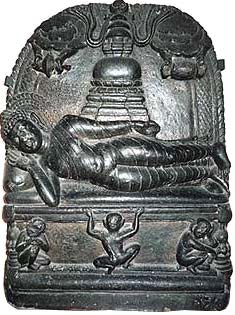 The
The